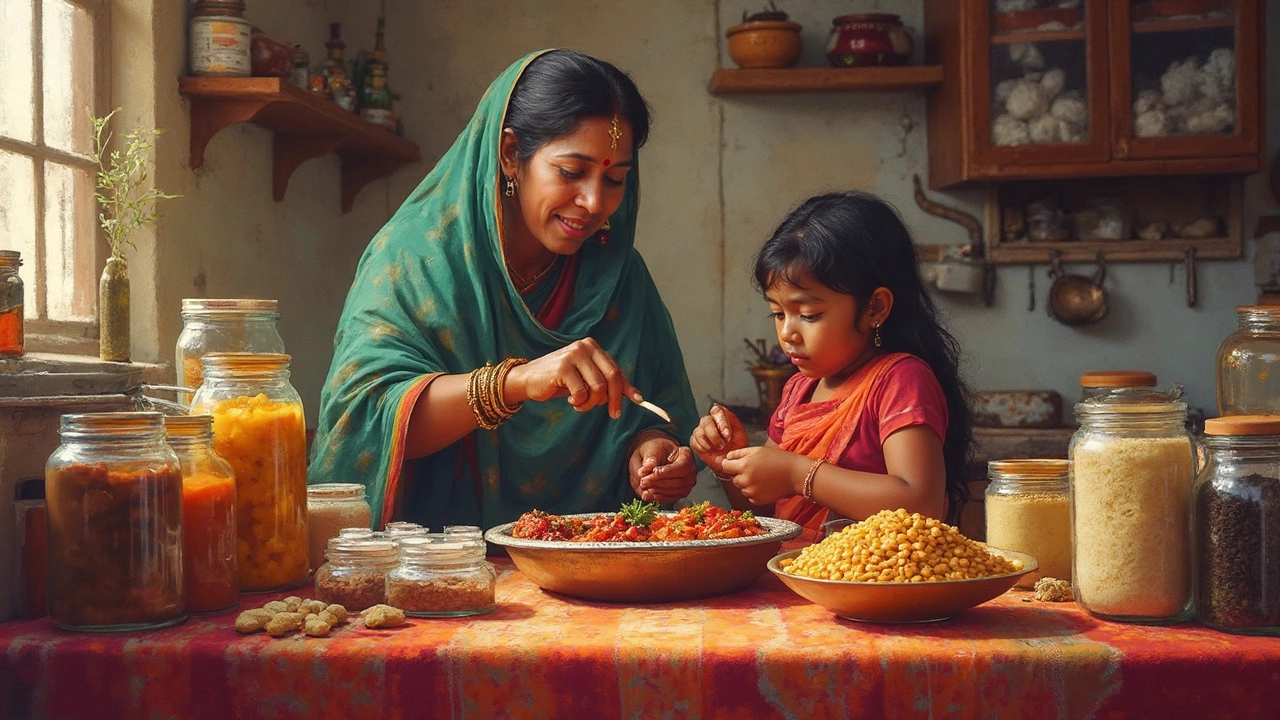Did you know the secret to your favourite packaged snack isn’t just the ingredients, but in how it’s been handled before it even hits the shelves? Food rarely goes straight from the farm to your fork. The journey is long, loaded with science, tradition, and some hard-earned tricks passed down through generations. What’s wild is that behind every meal you eat, whether it’s a home-cooked Sunday roast or a bag of crisps from the chippy on the corner, the same set of four basic food processing principles are doing the heavy lifting. Once you know what they are—and why they matter—you’ll never look at your kitchen the same way again.
Sorting and Cleaning: First Step to Safe Food
If you think a quick rinse is enough, you’re not alone. But there’s much more to sorting and cleaning in food processing than meets the eye. Factories and sometimes even small artisanal producers invest in careful sorting to kick off the food journey. Imagine apples rolling down a conveyor belt in a Birmingham warehouse, dodging bruises and bad spots with the help of workers and optical sorters. Food’s got to be safe and look decent, right?
About 17% of all produce in the UK is tossed out before it ever gets processed—largely because of sorting for blemishes, size, and ripeness. Cleaning goes much deeper than your home rinse. Industrial washing lines use jets of water, sometimes spiked with safe food cleansers, to get rid of dirt, pesticide residues, even tiny bugs. Essentially, this step stops bacteria and other nasties from ever making it any further. In the industry, they’ll test for bacteria counts on equipment before and after cleaning—some do this daily to avoid a nightmare recall situation.
If you’re prepping at home, the lesson is always inspect your veg and fruit, ditch anything mouldy, and be generous with washing, especially leafy stuff. Don’t just count on water alone if you want a tidy kitchen or you’ve had a questionable delivery from an online grocery. And if it’s meat or fish, the industry rule is: keep it cold, clean hands and tools, and keep raw separate from ready-to-eat. You'll never regret being fussy with that first step—trust me, your stomach will thank you later.
Preservation: Fighting Off Spoilage and Waste
You’d be amazed at how clever people get about stopping food from spoiling. Before fridges were everywhere, folks relied on drying, fermenting, curing and canning to keep food safe. Today, these preservation methods still go strong in homes and factories. Why? Because bacteria, yeasts, and moulds love a warm, moist snack just as much as you do—and they’re not fussy about whether that’s milk, bread, or a chicken leg.
Modern food processing has nailed preservation with a mix of age-old wisdom and sharp science. Chilling and freezing are big players—your frozen peas and pizza are proof—but additives like salt or vinegar aren’t just for flavour; they’re there to shut down microbial growth. In Birmingham, many local butchers still cure meats the old-fashioned way, mixing tradition with careful checks on humidity and salt. Fermentation has been making a comeback, too, from sourdough bread to kombucha. It’s not just trendy; the right bacteria can boost flavour, yes, but also block dangerous bugs that spoil your food.
An interesting fact: food waste from spoilage in UK homes has dropped roughly 7% in the last five years, thanks to clearer best-before dates and better home fridges. But you can do more. Store perishables in the coldest part of your fridge, keep breads airtight, and don’t be afraid to freeze leftovers. Try pickling that extra cabbage—a few spices and some vinegar, and you’ve got something worth bragging about at a barbecue. Those little preservation hacks at home can save you money and genuinely stop stuff from going to the bin.

Heat Processing: Making Food Safer and Tastier
Here’s where things get hot—literally. Heat processing is all about using the right amount of warmth to kill bugs, make stuff taste better, or change textures. It’s the absolute backbone of safe food, especially for stuff you buy packed or canned. A classic example is pasteurisation, which brought a revolution to milk safety. Without heating milk to just the right temp (usually around 72°C for 15 seconds), bacteria like E. coli and Salmonella would still be a real threat in the UK.
Go to any bakery or ready-meals factory, and you’ll find ovens and huge steam kettles calibrated down to the second. They monitor internal temperatures, not just for the finished product, but throughout the process. Why bother? Because pathogens don’t mess about—get the temperature or timing wrong, and you’ve wasted an entire batch or, even worse, risked someone’s health. For example, scientists at Campden BRI, a major UK food research group, proved that insufficient heating was still the number one reason for canned food recalls in 2023.
Don’t just crank up the stove at home, though. There’s an art to getting the inside of cooked chicken up to 75°C, with juices running clear, or simmering jam to the perfect setting point. Get a food thermometer—it beats guessing. A mate of mine ruined Sunday lunch last winter because he trusted the colour of a roast, not the temp, and spent the night regretting it. Sometimes it’s the little checks that keep your kitchen friendly and fun, not risky business.
Packing and Storage: Last Line of Defence
Packing isn’t just about keeping food tidy or looking nice—though that’s a perk when you’re buying gifts at the Bullring market in Birmingham. The main job is this: protect processed food from bugs, moisture, and oxygen that want to ruin your meal. Think of packaging like your food’s own armour, keeping it safe on its journey from the shop to your dinner table.
Ever noticed the rise of vacuum-packed meats or resealable salad bags? That’s not just for show. By pulling air out and sealing things tightly, food lasts longer, tastes fresher, and travels better. Most food in the UK that sits on a shelf for more than a week is packaged in a way that blocks light and oxygen. That’s because light and air are two of the biggest enemies of flavour and safety. Some supermarkets have started trialling smart packaging with sensors that change colour if food gets too warm or starts spoiling. Wild, right?
Here’s a handy table to show how packaging and storage can make a difference:
| Food Type | Safe Storage Duration (Fridge) | Safe Storage Duration (Proper Packaging) |
|---|---|---|
| Cooked Chicken (wrapped in foil) | 2 days | 4 days (airtight container) |
| Fresh Bread | 3 days (bread bin) | 7 days (sealed plastic bag) |
| Chopped Salad Leaves | 2 days (open) | 5 days (sealed bag, with moisture pack) |
Tip for home cooks: Always reseal, refrigerate quickly after serving, and check for punctures in packaging before you buy. If you’re storing leftovers, let them cool down before sealing (to avoid condensation and mould). My mum swears by glass containers for everything—less plastic smell and easier to see what’s inside, so leftovers don’t go forgotten. Just don't pile hot food straight into sealed tubs—you’ll thank me next week when you don’t find green fluff on your lasagne.

Why These Principles Matter in Everyday Life
You might be wondering if all this detail really changes the food on your plate. Actually, it does. The four basic food processing principles—sorting and cleaning, preservation, heat processing, and packaging—shape not just industrial food safety but what goes right or wrong in your kitchen every day. Miss a step, and you risk everything from bland flavour to a nasty stomach upset. Get them right, and you’re cooking smarter, not just harder.
If you study labels on supermarket ready meals in Birmingham, you’ll spot dates and storage advice perfectly tuned to these principles. It’s not just about ticking legal boxes; it’s a reminder that even the best brands can’t guarantee food safety once it leaves the store if you don’t handle it right at home. Stats from Food Standards Agency show that about one in six food poisoning cases in the UK starts with mishandling at home—not in the factory.
The cool bit? These principles work in fancy food labs and in cramped student flats alike. When you bring home a haul from Digbeth Market, wash your veg, store fish cold and dry, batch-cook stews with patience, and always use clean, dry jars for homemade chutney. It’s easy to think you need special gear or pricey gadgets, but the main thing is an eye for detail, a bit of care, and these four principles in the back of your mind. Turns out the boring stuff science nerds invented is actually the secret to a great meal, and your family’s health too. Want fewer sick days and tastier leftovers? Respect the process—that’s the real kitchen magic hiding in plain sight.
